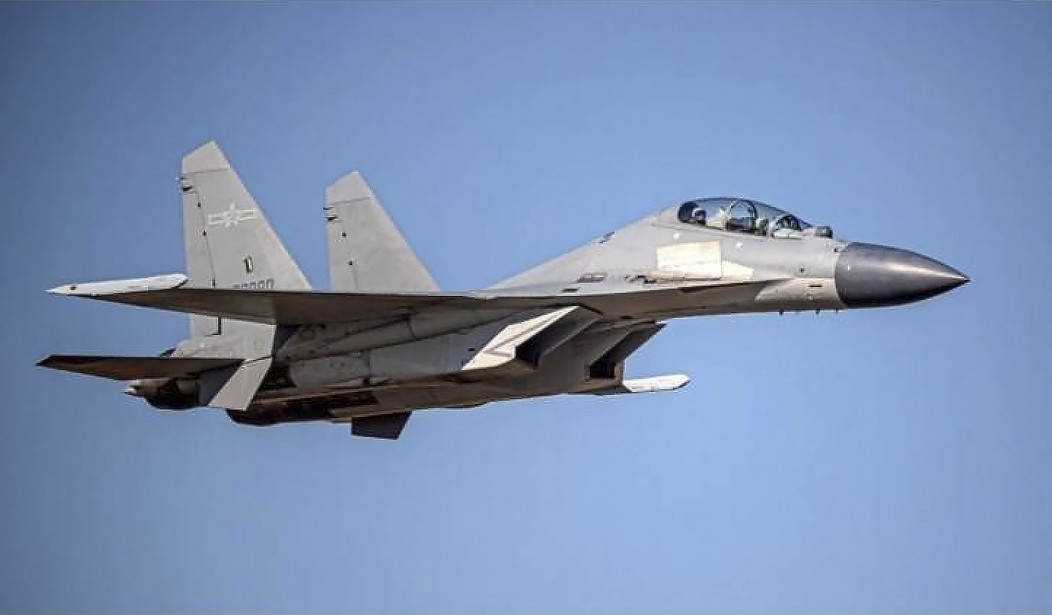The world's attention may be largely on the Middle East, but China is continuing a provocation campaign in the western Pacific. In the last two years, there have been over 180 unsafe approaches by Chinese People's Liberation Army Air Force aircraft to American and allied aircraft operating in international airspace over the western Pacific. These acts seem tailor-made to provoke a response from U.S. aircraft.
The U.S. Department of Defense is telling the media that aircraft are experiencing an uptick in "coercive and risky" interactions with Chinese planes.
DOD officials outlined the trend at a press conference Tuesday and provided newly declassified photos and videos of relevant incidents.
"Since the fall of 2021, we have seen more than 180 such incidents," said Assistant Defense Secretary for Indo-Pacific Security Affairs Ely Ratner. "More in the past two years than in the decade before that. That's nearly 200 cases where PLA operators have performed reckless maneuvers or discharged chaff or shot off flares or approach to (sic) rapidly or too close to U.S. aircraft."
It's plain that the Chinese intend to make free and open transits of international airspace in the western Pacific as stressful and difficult as possible.
Ratner continued, "All as part of trying to interfere with the ability of U.S. forces to operate safely in places where we and every country in the world have every right to be under international law."
The People's Liberation Army (PLA) has utilized swift, disruptive violations of airspace norms to harass and irritate aircraft from the U.S. and its allies.
"And when you take into account cases of coercive and risky PLA intercepts against other states, the number increases to nearly 300 cases against U.S. ally and partner aircraft over the last two years," Ratner added.
China is also warning the United States against intervening in the aforementioned Middle Eastern conflict, stating that "...those who play with fire will perish by it." It's difficult to see what China means by that, as they lack the capability to directly project power that far from their shores — unless they use their sea-launched or land-based ballistic missile capacity.
It's hard for the casual observer to see what China has to gain by these actions, but they surely must think they stand to gain something that is commensurate with the risk they take. China is a nation beset with problems, not least of which is a demographic crisis that is one of the worst in a world teeming with demographic cliffs; China's real estate market is falling down, the ruling Chinese Communist Party is now headed up by a dictator who has seized more direct personal power than anyone since Chairman Mao; the Middle Kingdom is in danger of collapse, and yet they provoke a response from Western aircraft in international skies?
The answer may lie in that very fear of collapse.
It's been said that war is armed robbery writ large, and that may explain many of China's actions in the Pacific. Since the Second World War, the United States Navy has enforced a Pax Americana on the world's oceans; trade has been safe, reliable, and easy because international shipping traveled the seas protected by American might, just as two thousand years before, European trade caravans traveled under the protection of Roman legions.
But Rome fell, the legions faded away, and the United States Navy is hardly the world-spanning force that it was in 1945 when the United States Pacific fleet boasted more combat ships than the rest of the world's navies combined — including the United States Atlantic Fleet. Add to that the fact that today's Navy seems more concerned with diversity training than war-fighting, and it becomes apparent that China might see an opportunity to seize greater resources.
Watch Taiwan. That may well be the flashpoint.

